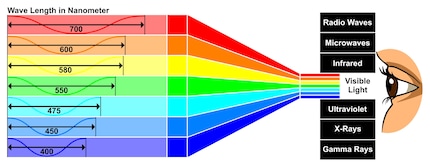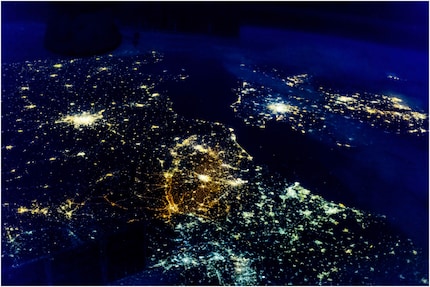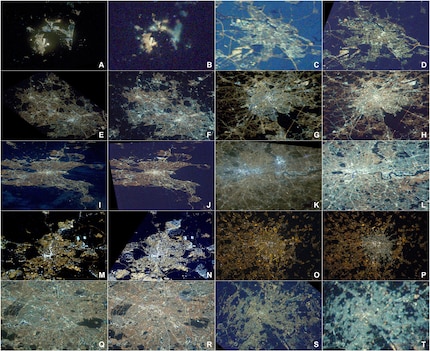
Background information
Interview with a chronobiologist: how do our internal clocks work?
by Anna Sandner

Not all light is made the same. The effect light has on us depends on the wavelength. Blue light controls our sleep-wake rhythm, while red light has a positive effect on wound healing, among other things. Where in everyday life do we encounter too much or too little light?
The colour of the light, i.e. the emitted electromagnetic spectrum, is crucial when it comes to its effect. But the time of day also plays an important role. Ever sat down in front of a blue-light therapy lamp in the evening? You probably meant well. But what that does is fool your inner rhythm into thinking it’s still broad daylight. So, if you want to give your inner clock a helping hand, pay attention to timing.
Your biological clock keeps your body on a consistent 24-hour cycle. This so-called circadian rhythm (from the Latin «circa» (about) and «dies» (day) is centrally controlled by the suprachiasmatic nucleus (SCN) in the hypothalamus. This area in the brain is responsible for synchronising your body’s biological clocks with the 24-hour light-dark cycle [1].
The results showed that the test subjects reacted extremely differently to different light intensities. For some, as little as six lux (i.e. roughly the light intensity of a few candles) was enough to halve melatonin production. For others, however, 350 lux (i.e. roughly the intensity of bright indoor lighting) was required to halve melatonin levels [6].
Too much light at the wrong time doesn’t have negative consequences only for humans, but also for animals and plants. They also align their internal clocks with light and are increasingly disturbed in their natural rhythms [2]. In a 2021 review study, researchers showed that altering circadian rhythms in the animal world can cause entire ecosystems to become unbalanced.
Radiation with shorter wavelengths of 100-400 nm, i.e. ultraviolet (UV) light, is relevant for vitamin D production – which neither blue nor red light has any effect on. UV radiation is divided into three groups: UV-A (320-400 nm); UV-B (280-320 nm) and UV-C (100-280 nm). The ozone layer in the stratosphere absorbs the UV-C component found in sunlight, so UV-C doesn’t reach the earth’s surface.
By the way, if you’re hoping to boost your vitamin D levels at the solarium, you’re out of luck. Although tanning beds do use UV light, the UV-B component is usually very low, as it can lead to sunburn more quickly. You’ll find more information on UV radiation and what to look out for when protecting yourself from the sun here.
Sources:
[1] Wirz-Justice, A., Skene, D. J., & Cajochen, C. (2018). Effects of Light on Human Circadian Rhythms, Sleep and Mood. Somnologie - Schlafforschung und Schlafmedizin, 22(Suppl 2), 5-9.
[2] Sanders, D., Fröhlich, K., Kolláth, Z., Light Pollution, M., & Ecological Consequences, W. G. (2021). A meta-analysis of biological impacts of artificial light at night. Nature Ecology & Evolution, 5(11), 1363-1371. https://doi.org/10.1038/s41559-020-01322-x
[3] Sánchez de Miguel, A., Bennie, J., Rosenfeld, E., Dzurjak, S., & Gaston, K. J. (2021). Environmental risks from artificial nighttime lighting widespread and increasing across Europe. Science Advances, 7(19), eabl6891. https://doi.org/10.1126/sciadv.abl6891
[4] Waterhouse, J., Reilly, T., Atkinson, G., Edwards, B., & Jet Lag Advisory Group. (2007). Jet lag: trends and coping strategies. The Lancet, 369(9567), 1117-1129. https://doi.org/10.1016/S0140-6736(07)60529-7
[5] Sharma, S. K., Kharkwal, G. B., & Sajo, M. E. (2017). Red Light Phototherapy in Tissue Repair of Low-Level Laser Therapy. International Journal of Molecular Sciences, 18(6), 1255.
[6] Phillips, A. J. K., Vidafar, P., Burns, A. C., McGlashan, E. M., Anderson, C., Rajaratnam, S. M. W., & Lockley, S. W. (2019). High sensitivity and interindividual variability in the response of the human circadian system to evening light. Proceedings of the National Academy of Sciences, 116(28), 13774-13779. https://doi.org/10.1073/pnas.1901824116
Header image: Todd Cravens/Unsplash
Science editor and biologist. I love animals and am fascinated by plants, their abilities and everything you can do with them. That's why my favourite place is always outside - somewhere in nature, preferably in my wild garden.
Interesting facts about products, behind-the-scenes looks at manufacturers and deep-dives on interesting people.
Show all
Background information
by Anna Sandner

Background information
by Kim Muntinga

Background information
by Michael Restin
Light plays a crucial role in our daily lives and has a significant impact on our health, mood and behaviour. Sunlight consists of wavelengths of the entire electromagnetic spectrum that’s visible to us (from 380 to 750 nanometres) and also includes infrared (IR) and ultraviolet (UV) light. But we’re often also surrounded by so-called monochromatic light sources that emit light of only one particular wavelength. Especially blue-white light, a lot of which is found in standard LEDs, can influence our inner rhythm.

In addition to colour and timing, light intensity is also critical. Even if all the lights are on in your home, the light intensity (measured in lux) is far below what you get outdoors. The illuminance in living rooms lies around 100–300 lux, while offices are often a bit brighter at 500 lux. Outdoors, about 6,000 lux will penetrate through the clouds in winter, rising to as much as 20,000 lux in summer. This is where light therapy lamps, which boast strengths of up to well over 10,000 lux, come into play.
This regular cycle is mainly influenced by light with a wavelength of about 480 nm, i.e. blue light. Exposure to this blue light suppresses the production of melatonin. This messenger substance, also called the sleep hormone, is involved in the regulation of the sleep-wake rhythm. When you get up in the morning and greet the day in the light, the blue light inhibits melatonin production and your body gets the signal, «It’s daytime – time to be active.» Exposing yourself to light in the morning can improve both your sleep and mood [1]. When it gets dark in the evening, melatonin production can start up again. As it accumulates, your body realises it’s time to sleep. You feel tired.
So much for the theory. In a world illuminated by artificial light, our inner clocks don’t have it easy. Just because the sun’s setting outside doesn’t mean we’re hanging out in the dark. On the contrary, we’re exposed to a lot of blue light, for example from LED lamps as well as mobile phone displays and other screens. When we watch TV in the evening, we further slow down melatonin production and keep ourselves artificially awake. This has consequences for our sleep and mood and can lead to sleep disorders, obesity, or even cancer [1].
However, a 2019 study that paid attention to the individual melatonin production of each subject found that the response to blue light differs greatly between individuals [6]. The researchers exposed the test subjects to different levels of light over several weeks and repeatedly checked their melatonin levels in saliva samples. The light used corresponded to the natural evening lighting that prevails after the onset of twilight. Light intensity (in lux) was then varied to identify the minimum light intensity that still inhibits melatonin production.

Nighttime light pollution causes shifts in predator-prey relationships, food webs and plant-pollinator relationships, among other things [2].
British researchers also showed that the spectral composition of nighttime lighting in Europe has shifted over the past ten years towards white LEDs with a higher blue light content [3]. They determined this by comparing digital images of astronauts on the International Space Station from 2012/2013 with images from 2014 to 2020. Ever since energy-saving LEDs have been increasingly used for street lighting instead of the previously common gas lamps with a warmer light spectrum, the nighttime colour spectrum has also shifted. The researchers note an increased risk of harmful effects on ecosystems due to the shift toward blue emissions, and recommend opting for LEDs with low blue light levels.

When we get on a plane and arrive in a completely different time zone in a flash, we confuse our internal clock to the extreme. The clock on our phone switches over immediately, while our bodies take longer to readjust. The result? Jet lag, as our internal clock is still stuck in the old time zone. It can take several days, in extreme cases even up to a week, for our metabolic processes to adapt to the new light conditions and our internal clock to switch to the current time zone [4]. However, you can help your inner clock by adjusting your sleep rhythm before a long flight, spending as much time as possible in the sunlight during the day and avoiding alcohol and caffeine.
While too much blue light can prove unhealthy for the reasons mentioned above, red light with a wavelength of about 620 to 780 nanometres is known for its positive effects on the human body. It is commonly used in light therapy, where the body is exposed to red light to treat a variety of health problems. Studies have found that red light can help reduce inflammation, speed up wound healing and even relieve symptoms of depression. Red light therapy has been shown to stimulate cellular energy production, thus contributing to the reduction of inflammatory processes [5]. Red light therapy is already used in various medical fields, such as dermatology, orthopaedics and dentistry. It’s considered a promising, non-invasive and safe treatment option for repairing tissue.
Infrared light (IR light) begins at the lower end of where visible red light ends. IR-A radiation starts at a wavelength of 780 nm, IR-B radiation at 1,400 nm and IR-C goes from 3,000 nm up to 1 mm. We perceive these wavelengths as heat radiation. IR radiation is used in medicine and in the wellness industry to alleviate physical ailments. The shorter the wavelength, the deeper into the skin the rays penetrate. There, the electromagnetic waves cause the water molecules to vibrate, generating heat. This heat promotes blood circulation and can relieve muscle tension. Warming radiation can also help against certain autoimmune diseases and counteract wound healing disorders. In the wellness industry, heat lamps and heat cabins are used. Always pay attention to how you feel: if it gets too warm or feels painful, should stop the treatment.
Most of the UV radiation that reaches the earth’s surface is UV-A radiation (about 95 per cent). The remaining five per cent is UV-B radiation. Due to the longer wavelength of UV-A, this radiation can penetrate deeper into our skin than UV-B or UV-C.
UV-A is associated with skin ageing, wrinkling and skin cancer.
Although UV-B radiation only reaches the upper epidermis, it can damage cells there and lead to sunburn. It also plays a major role in the development of skin cancer, as it can trigger DNA mutations. UV-B radiation does also have a positive effect on our bodies: it stimulates the production of vitamin D. In winter, the sun’s rays at our latitude aren’t sufficient to boost this metabolic process, so treatment with ultraviolet light therapy may be beneficial in some cases. But, in general, if you spend enough time outdoors in the summer, you have a good chance of filling your vitamin D stores sufficiently to get you through the winter without any additional measures.